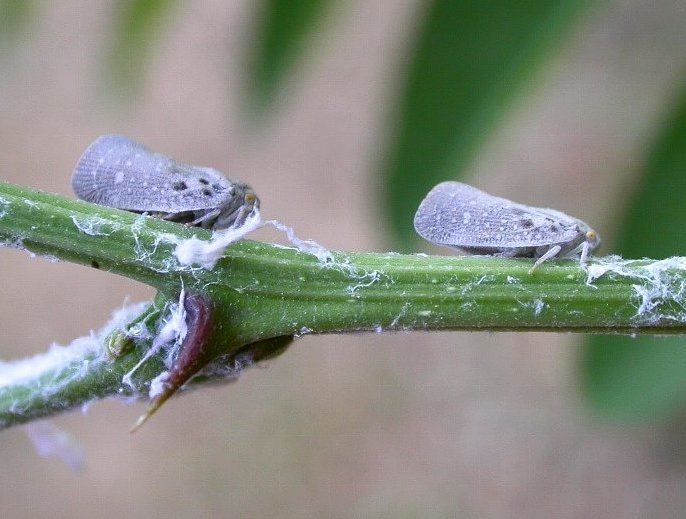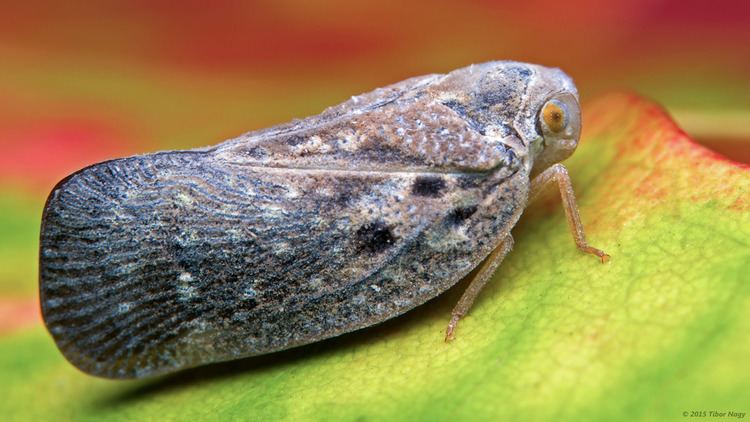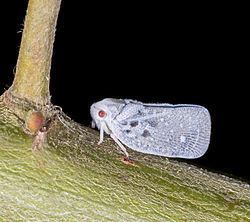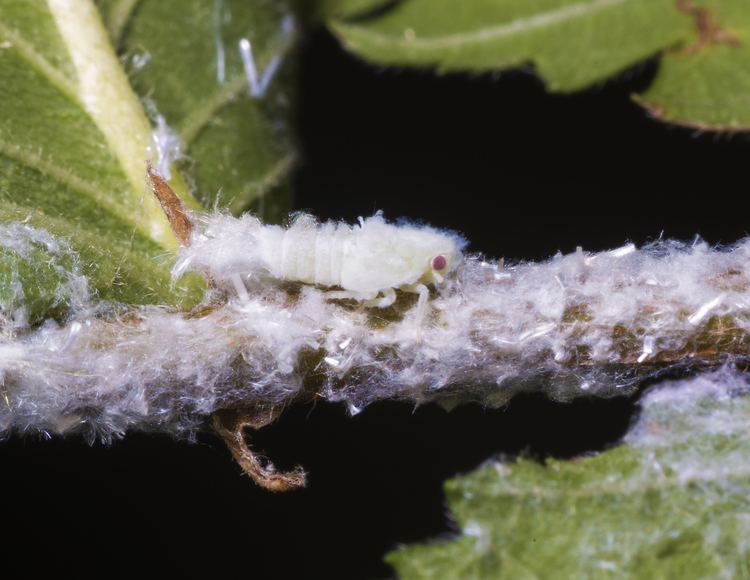Rank Species | Genus Metcalfa Higher classification Metcalfa | |
 | ||
Similar Flatidae, Insect, Planthopper, True bugs, Spotted lanternfly | ||
Metcalfa pruinosa my shy insect frined
Metcalfa pruinosa, the citrus flatid planthopper, is a species of insect in the Flatidae family of planthoppers first described by Thomas Say in 1830.
Contents
- Metcalfa pruinosa my shy insect frined
- Citrus flatid planthopper flatidae metcalfa pruinosa lateral view
- Subspecies
- Distribution
- Description
- Behavior and ecological impact
- References

Citrus flatid planthopper flatidae metcalfa pruinosa lateral view
Subspecies
Distribution

The species is native to North America (Nearctic ecozone), but is today found throughout southern Europe (Austria, France, Italy, Slovenia and Switzerland), in the Neotropical ecozone and in South Korea.
Description

Adults of Metcalfa pruinosa can reach a length of 5.5–8 millimetres (0.22–0.31 in) and a width of 2–3 millimetres (0.079–0.118 in) at the widest point. They are initially whitish. The color of adults may vary from brown to gray, in connection with the presence of a bluish white epicuticular wax, covering especially the nymphs. The large and prominent compound eyes are yellow. The mouthparts are adapted for piercing and sucking. The trapezoidal forewings are held vertically, wrapping the body when the insect is at rest. The front wings have veined costal cell and several characteristic whitish spots. The hind tibiae usually have two lateral spines in addition to the other spines at the apex.
Nymphs may reach a length of about 3.2 millimetres (0.13 in). Color varies from whitish to light green, with relative large tufts of white wax on the abdomen.
Behavior and ecological impact
The species is univoltine, producing one generation per year. Adults mate in fall during the night. The females lay about 100 eggs, usually in the bark of host plants. Eggs overwinter, hatching the following spring. The adults are seen mainly in summer and fall, when they feed gregariously on sap. When they feed on sap, they eject excess sugar in the form of honeydew. This attracts bees, which convert it to honey.
As it feeds, it causes serious damages to field crops and ornamental plants. It is polyphagous, feeding on a variety of plant taxa. Host plants include maples, dogwoods, hawthorns, willows, elms, privet, black locust, and elder. It lives on crop plants such as grape, citrus, apricot, peach, blackberry, and raspberry.
